
The Ultimate Guide to Gay Iceland | LGBT+ History, Rights and Culture

What's the gay scene like in Iceland? How do Icelanders treat the LGBTQ community? Is Iceland a good travel destination for queer people? Read on for all you need to know about queer history, Reykjavik Pride, and gay Iceland in general.
- Learn about Icelandic culture by reading A Snapshot of Iceland | Facts, Figures & Information
- Acquaint yourself with the history of Gender Equality in Iceland
- Here you can read more about Icelandic History
Being queer in Iceland is not something that is tolerated; it is something that is celebrated. There are very few places in the world where people from across the spectrums of gender and sexuality receive as much love, and encounter as little hate, as they do in Iceland.
With almost full legal equality, strong representation in parliament and the media, and an infrastructure that exists to support and elevate queer people, Iceland has become a true rainbow paradise. The conditions that have allowed queer culture to thrive have turned Iceland into a popular tourist destination for sexual and gender minorities.
It may not have the party appeal of Fire Island or the sands and sun of Mykonos, but Iceland is fast becoming recognised as a home away from home for the LGBTQIA community*. There are many organisations today that specialise in gay travel; the local scene is ever-developing and there is a whole range of events catering specifically to queer people and our allies.
History of Gay Iceland
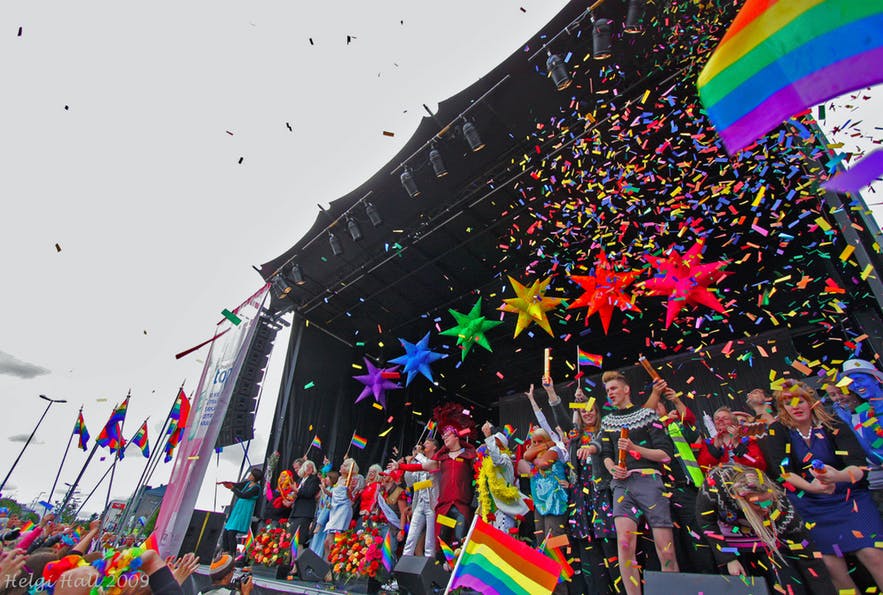 Photo from Wikimedia, Creative Commons, by Helgi Halldórsson. No edits made.
Photo from Wikimedia, Creative Commons, by Helgi Halldórsson. No edits made.
Iceland has not always been a sanctuary for queer people. The fight for equality here was as much of an uphill struggle as it was, and is, in the rest of the world. Perhaps it was due to the island’s isolation, and the influence of the church throughout the country’s development, but unconventional relationships were demonised well into the 20th Century.
This was not exclusively a problem for the gay and bi community. In fact, the mindset of most Icelandic people was once so limited that anything outside of a union between an Icelandic man and an Icelandic woman was seen as immoral.
During the invasion of Iceland in World War Two, British forces occupied Iceland after the Nazis took over Denmark; they were later replaced by Americans, who at one point, were here in numbers that rivalled the native male population. This influx of worldly men from exotic places did not go unnoticed by Icelandic women, and their interest horrified the men.
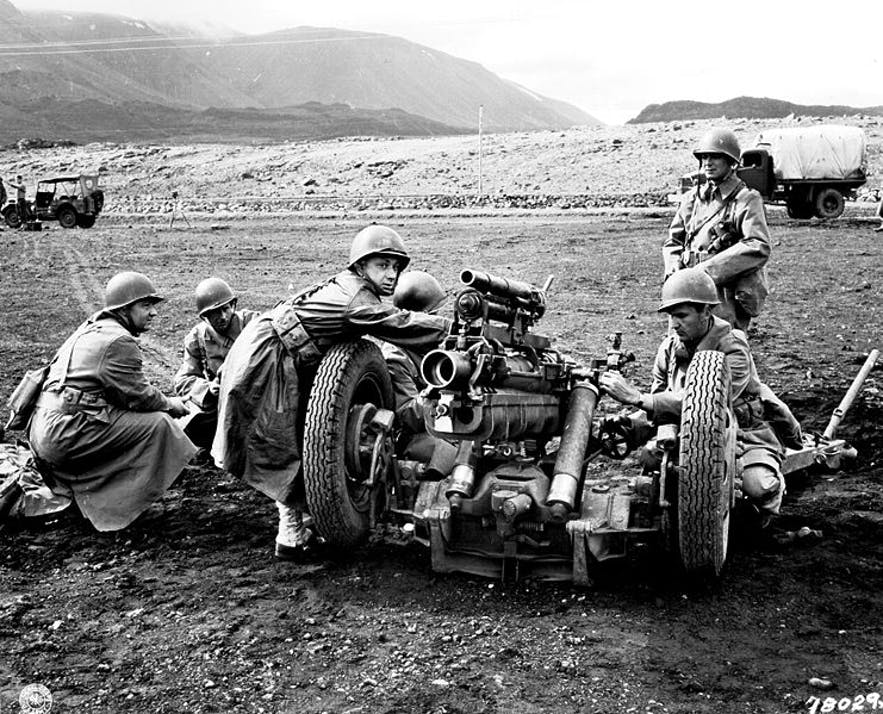 Photo from WIkimedia, Creative Commons, by army.mil. No edits made.
Photo from WIkimedia, Creative Commons, by army.mil. No edits made.
This was called ‘the situation’, or Ástandið, and both women who took American partners, and ‘the children of the situation’, called Ástandsbörn, met a huge amount of discrimination. The women were accused of everything from prostitution to treason for snubbing Icelandic men, and some of them were even institutionalised, for what can only be compared to modern-day conversion therapy.
LGBTQIA people faced discrimination that came from this same thread of ignorance. Icelandic men had lived in the same way with hardly a change from settlement to World War Two, and were not used to their conventions being challenged.
They were very resistant to the changing role of men and women in society, and the urban development of the nation in general, and this traditional obstinance is perhaps best illustrated in Halldor Laxness’ Nobel Prize Winning novel, Independent People.
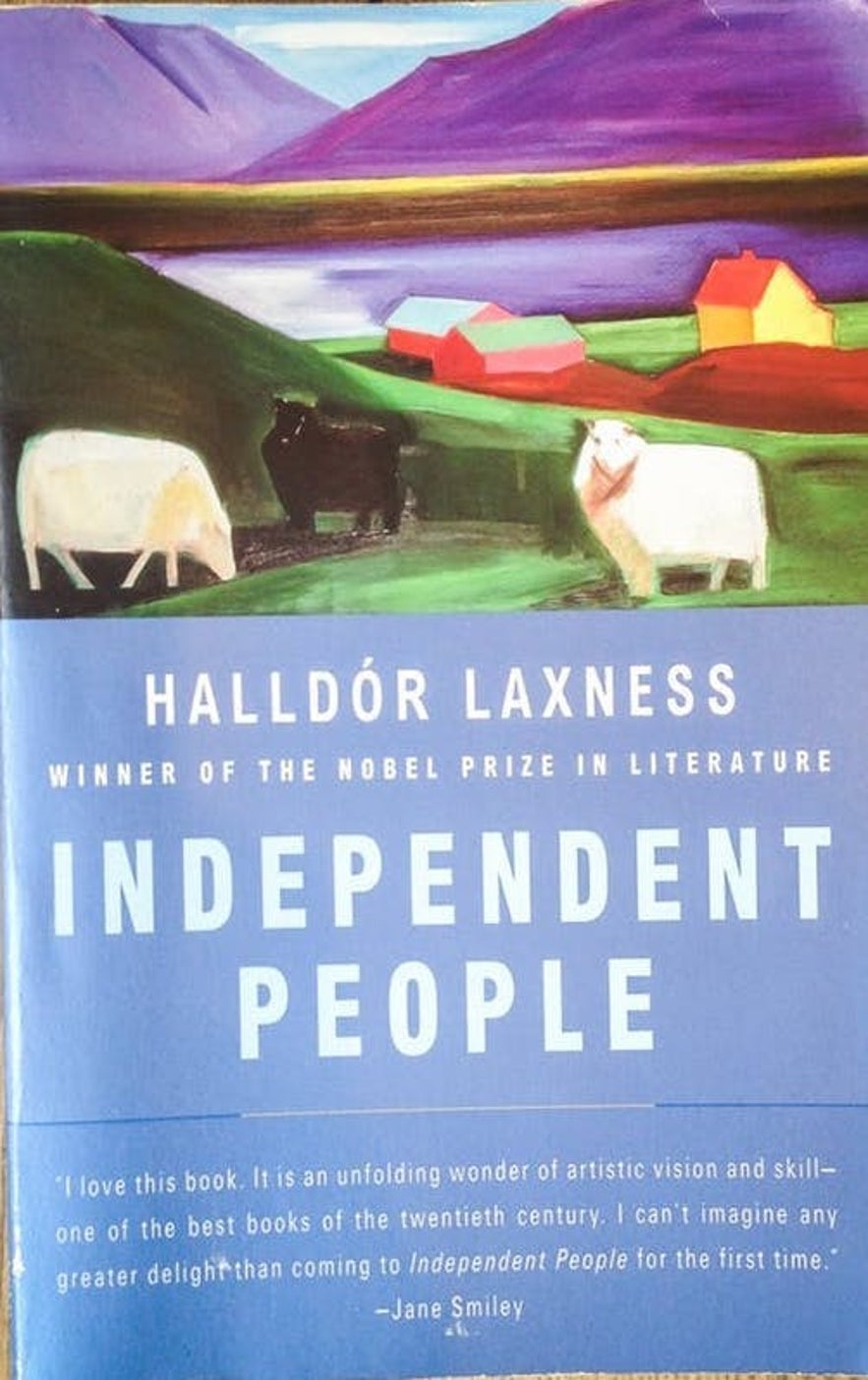
The protagonist, Bjartur, could not come to terms with his daughter's growing independence, nor the fact that Iceland was no longer a nation where everything relied on the strength and physical labour of the men.
Attitudes like Bjartur's meant that many modern ideas were scorned and, consequently, the first people who publicly stated their queer identities were ridiculed and ostracised.
The first well-known gay man to come out was the loved singer and theatre personality Hörður Torfason, who encountered such a change of public opinion towards him that he exiled himself from the nation for fifteen years.
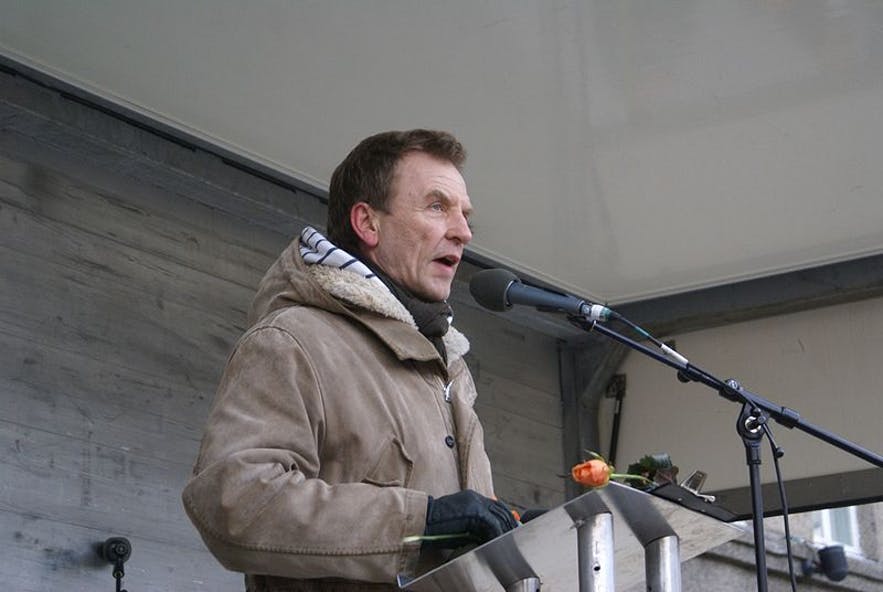 Photo from Wikimedia, Creative Commons, by Oddur Benediktsson. No edits made.
Photo from Wikimedia, Creative Commons, by Oddur Benediktsson. No edits made.
Iceland’s first openly transgender woman, Anna Kristjánsdottir, met similar discrimination and ridicule when she first came to terms with herself; she had to move to Sweden in 1989 to even find a forum in which she could comfortably talk about gender dysphoria.
In a generation, however, these attitudes became quickly antiquated. Both Hörður and Anna have since returned to Iceland, and are now celebrated for their bravery rather than demonised for their differences.
Gay Iceland Today
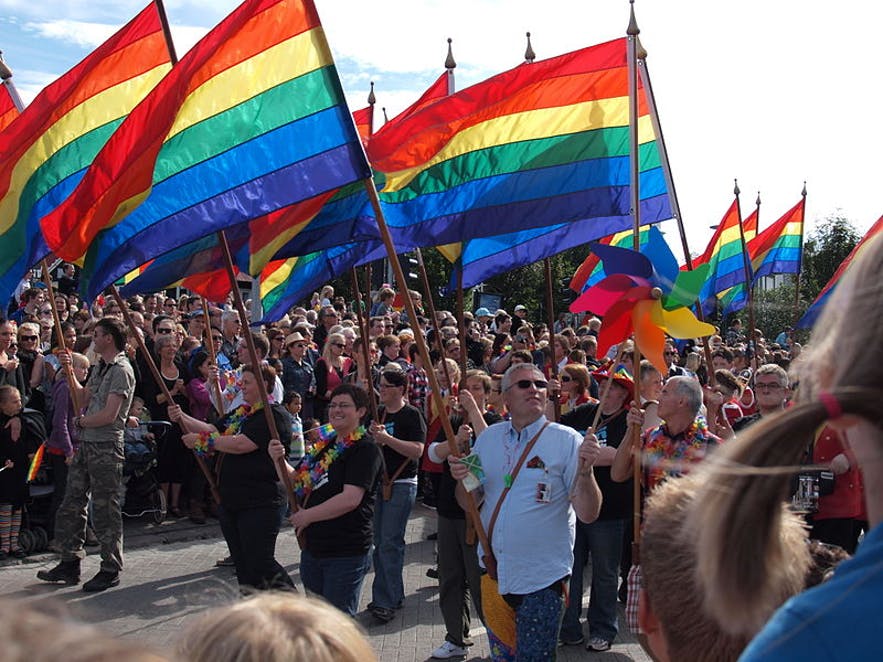 Photo from Wikimedia, Creative Commons, by JP. No edits made.
Photo from Wikimedia, Creative Commons, by JP. No edits made.
After Hörður Torfason had come out to a hostile nation, those living in the closets became energised to change the attitudes that were oppressing them. In 1978, the National Queer Organisation was formed, called Samtökin ‘78, and it propelled the liberation movement into motion.
With greater visibility than ever before, more and more Icelanders started to come out. In a nation where everybody is somehow related to each other, it was just a matter of years before everyone had a gay cousin or bisexual niece, and their fears of queer people began to subside. Attitudes began to swing quickly and firmly against tradition, and the law followed.
Since the 1990s, a slew of legislation has been passed that has made Iceland one of the most gay-friendly places on earth. It was one of the first European countries to recognise same-sex partnerships in 1996 and to grant completely equal adoption and IVF rights for same-sex couples in 2006. In 2010, same-sex partnerships were recognised as marriages, and in 2012, the needs of the trans and genderqueer community were met with sweeping legislation that formalised the name and identity changing processes.
The most recent development came in 2015 when the Church of Iceland declared that they would welcome same-sex partners to marry within their institutions. Observing as a Brit, this was a refreshing and revolutionary step, considering that the UK parliament introduced an entirely unnecessary ‘quadruple lock’ on preventing the Church of England from officiating such services back in 2013.
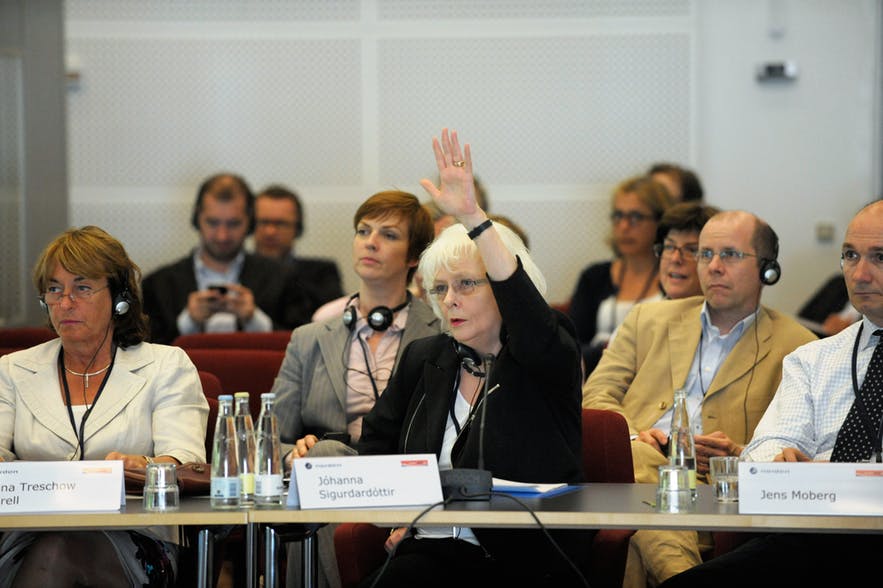 Photo from Wikimedia, Creative Commons, photo by Johannes Jansson. No edits made.
Photo from Wikimedia, Creative Commons, photo by Johannes Jansson. No edits made.
An evolution in attitudes has clearly driven these changes in the law. In 2004, 87% of Icelanders surveyed declared their support for same-sex marriage; in a poll of the same year, taken in the USA, less than half - just 42% - believed the same. These attitudes were further reflected when Iceland became the first nation with an openly gay leader; Jóhanna Sigurðardottir was elected Prime Minister in 2009.
The only legislative piece missing from full legal equality in Iceland is the ban on men who have sex with men from donating blood. This, however, is under fierce debate in the country and does not look to remain on the books for long.
Other issues that are under discussion on a national level are things like a better understanding of HIV/AIDs, more available testing, and better access to medication. There is also a movement to remove gender from identification documents for undefined, questioning and transitioning people.
While there is still progression to be made, it seems that almost everyone is on board to help make it happen.
Queer Community in Iceland
 Photo from Wikimedia, Creative Commons, by Helgi Halldórsson. No edits made.
Photo from Wikimedia, Creative Commons, by Helgi Halldórsson. No edits made.
Today, Iceland’s queer population is thriving. The National Queer Organisation is stronger than ever, providing community outreach on every weekday, and free counselling for those struggling to come to terms with their identity.
Its main work now, rather than challenging homophobia, is to draw light to and tear down illusions regarding lesser known sexual and gender variations such as those of intersex people, asexual people, and most recently, the BDSM community.
While the National Queer Organisation is largely here for natives and residents, visitors to Iceland looking to investigate the gay scene also have several organisations they can turn to. Gay Iceland is a go-to site to find out what is happening in gay Reykjavík, and Gay Ice is a popular gay travel guide.
Since 2011, there has even been a tour-guiding company that caters specifically to the LGBTQIA community, Pink Iceland. Pink Iceland became known across the world in 2019, when they contributed a prize to Rupaul’s Drag Race All Stars 4; two of queens were granted holidays to Iceland for winning the makeover challenge.
Life in Gay Reykjavík
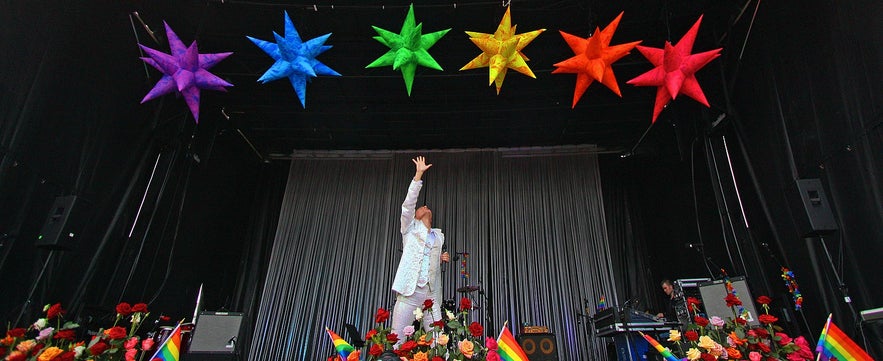
Photo from Wikimedia, Creative Commons, by Helgi Halldórsson. No edits made.
There are many, many ways visitors can immerse themselves within Iceland’s queer scene. Because of the level of tolerance, there is no need for a gay district; and though there are only two explicitly 'gay bars', Kiki and Curious, all venues in Iceland welcome people of different backgrounds.
It is very common for general institutions to put rainbow flags in their windows, or to have signs warning patrons against any discrimination on their property. This means that almost every space in Reykjavík is a safe and comfortable environment.
As traditional ‘straight’ venues welcome queer people, the courtesy is returned. Reykjavík Pride Festival is an event the whole family comes to enjoy, and the turnout for the march is almost unbelievable.
Though there are only about 340,000 people in the entire country, almost 100,000 come to celebrate each year, including the nation's President. Pride week hosts many events, such as concerts, documentary and film screenings, live comedy shows and drag performances. The Reykjavík Pride festival, and the Reykjavík Rainbow Festival, which takes place in February, are holidays where the whole nation comes together.
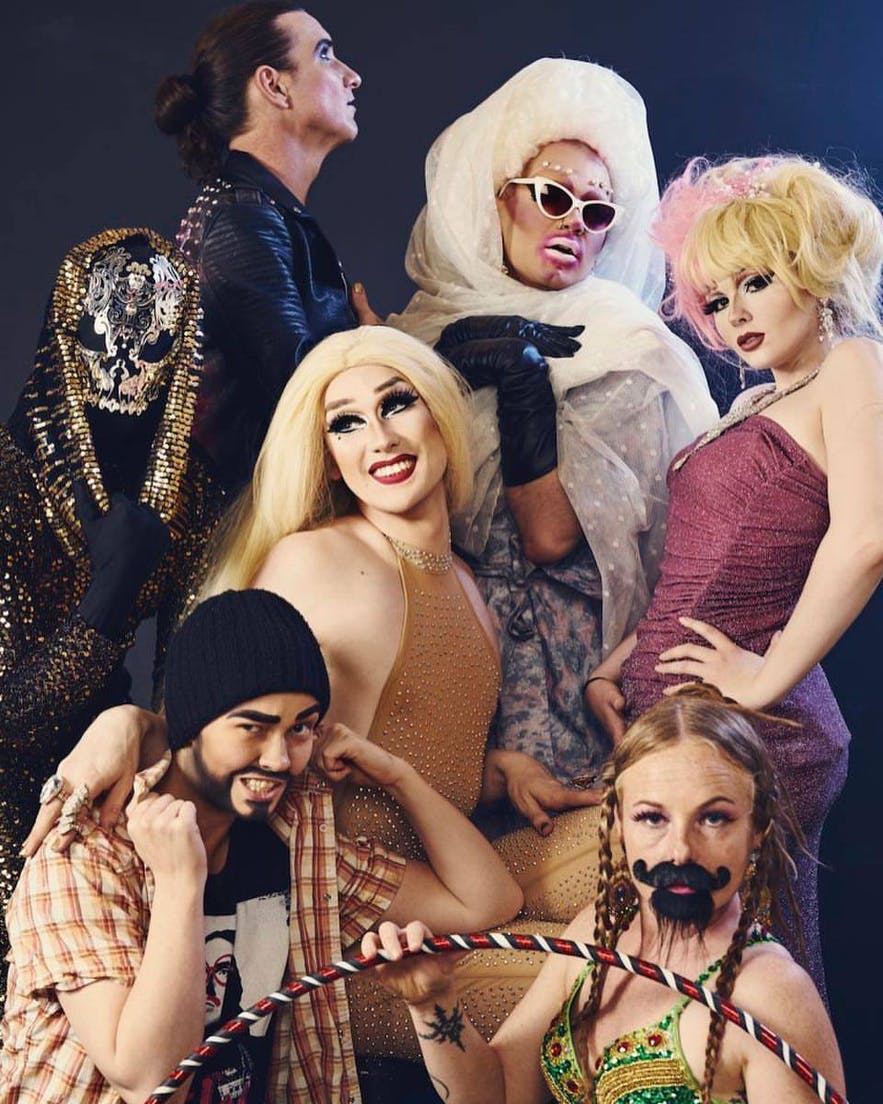 Photo from Richard Chapman's blog
Photo from Richard Chapman's blog
Unlike many other smaller cities, Reykjavík has queer events throughout the year. Legendary Icelandic pop star and gay icon Páll Óskar hosts an annual Pink Party; Bears on Ice comes around every September, and the stars of RuPaul's Drag Race have made several appearances over the past few years. Season six winner and uproarious insult comic Bianca Del Rio is bringing her show, It’s Jester Joke, to Harpa on August 19th this year.
Up and coming queer artists are also given many platforms to perform, showcasing a wide diversity of talent. Regular performers on the downtown scene, such as Jonathan Duffy, a gay comedian, Mighty Bear, a genderqueer punk musician, and Skaði, a trans performer and singer, are becoming more and more known. Skaði even competed this year to perform for the nation in Eurovision.
Reykjavík Kabarett is also an incredible platform for queer talent, and very popular amongst the queer audience. Furthermore, over the past three years, Icelandic drag has been surging to the forefront of the scene. There is now a drag troupe known as Drag-Súgur who perform at least twice a month at Gaukurinn, and many other individuals and groups who entertain across the city.
Iceland’s drag scene is particularly of note for its diversity, with drag kings and genderqueer performers as beloved as the more traditional queens.
- See also: The Drag Scene in Iceland
Gay Dating in Iceland

Dating someone of the same sex is completely uncontroversial in Iceland. It is not at all uncommon to see two men or two women holding hands down the high street, having a romantic meal in one of the city’s restaurants, or dancing as inappropriately as opposite-sex couples do after too many drinks on a night out.
As with anywhere in the world, ignorant people exist, and, of course, there is no guarantee that same-sex couples will be free from harassment; in the accepting culture of Reykjavík, however, bigotry is rare and not tolerated by the general populace.
In general, there are few taboos when it comes to dating in Iceland. Icelandic people are usually very sex-positive, and do not tend to stigmatise anyone on their sexual behaviour. Many single Icelanders use dating apps, and the queer community is no exception.
Tinder, Grindr and Planet Romeo are all very popular; if you are staying here for long, however, remember that gay Reykjavík is a pretty small scene, so get used to seeing the same faces.
The rest of the nation is so sparsely populated that if you are travelling around, prepare to not see another queer person online within a hundred kilometres. One thing to keep in mind is that there are growing concerns in Iceland about the rising rates of STI transmission, so if you are looking for a romantic encounter, stay safe.
- Read Sex and Nudity to find out more about Iceland's sex-positive attitudes
The Future of Gay Iceland
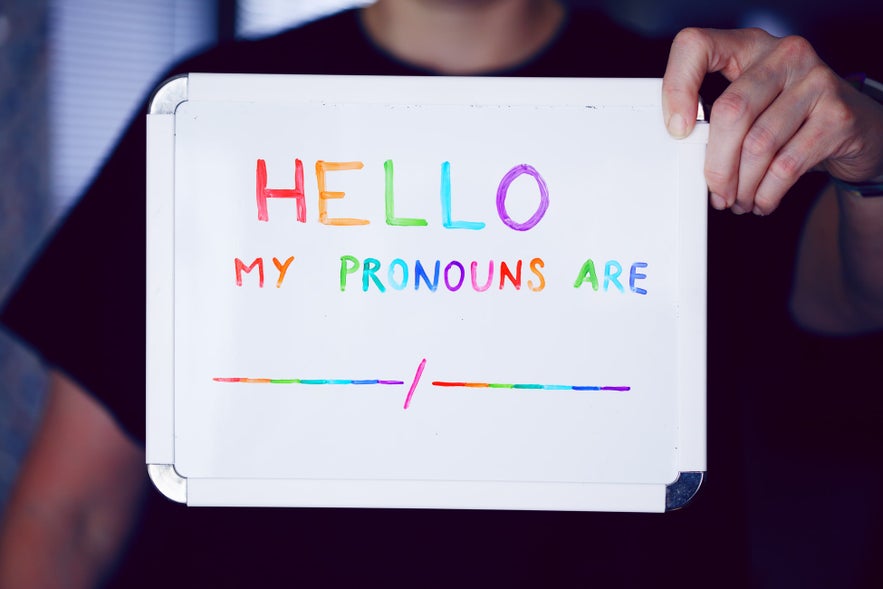 Photo by Sharon McCutcheon
Photo by Sharon McCutcheon
In a world where civil and human rights are looking less secure in many places where they once were sacred, it can be said with refreshing certainty that the support of queer people in Iceland is not going anywhere soon. This celebration of diversity is now part of the national character and held with deep pride amongst the majority of the people.
Even impartial, apolitical institutions, such as us at Guide to Iceland, do not consider there to be a legitimate, second side of the debate when it comes to protecting our queer community. Regressing away from the arc of history is not on anyone’s agenda, in Iceland at least.
Then again, however, why would it be? Queer people are helping to shape Icelandic culture, in everything from the arts to politics, and only for the better.
They fit perfectly within this nation’s growing reputation as a bastion of creativity and forward-thinking discussion. For anyone seeking to be themselves, celebrate their identity, and have no fear of doing so, then there really is no better place in the world than Iceland.
*LGBTQIA is the acronym used by the National Queer Organisation, and stands for lesbian, gay, bi, trans, queer (or questioning), intersex and asexual people. Here it refers to the whole queer community. Other organisations use other acronyms.
Inne interesujące artykuły
Lokalizacje filmowe na Islandii — Pełna lista
Jakie międzynarodowe filmy były kręcone na Islandii? Dlaczego hollywoodzcy producenci decydują się na kręcenie filmów na Islandii? Zapoznaj się z naszą pełną listą międzynarodowych wysokobudżetowych...Czytaj więcejAkureyri, stolica północnej Islandii | Kultura, historia i pomysły na spędzenie czasu
Zdjęcie: Ludovic Charlet Jaka jest historia Akureyri, drugiego co do wielkości miasta na Islandii, które bywa nazywane północną „stolicą” kraju? Ile osób obecnie tam mieszka i jakie atrakcje można...Czytaj więcej
Islandzcy Chłopcy Bożonarodzeniowi i Gryla | Islandzkie bożonarodzeniowe trolle
Kim są islandzcy Chłopcy Bożonarodzeniowi? Kogo świętuje się na Islandii w Boże Narodzenie, jeśli nie Świętego Mikołaja? Jaką rolę w islandzkim bożonarodzeniowym folklorze odgrywa olbrzymka Gryla i...Czytaj więcej

Pobierz największą platformę turystyczną na Islandii na telefon i zarządzaj wszystkimi elementami swojej podróży w jednym miejscu
Zeskanuj ten kod QR za pomocą aparatu w telefonie i naciśnij wyświetlony link, aby uzyskać dostęp do największej platformy turystycznej na Islandii. Wprowadź swój numer telefonu lub adres e-mail, aby otrzymać wiadomość SMS lub e-mail z linkiem do pobrania.




















